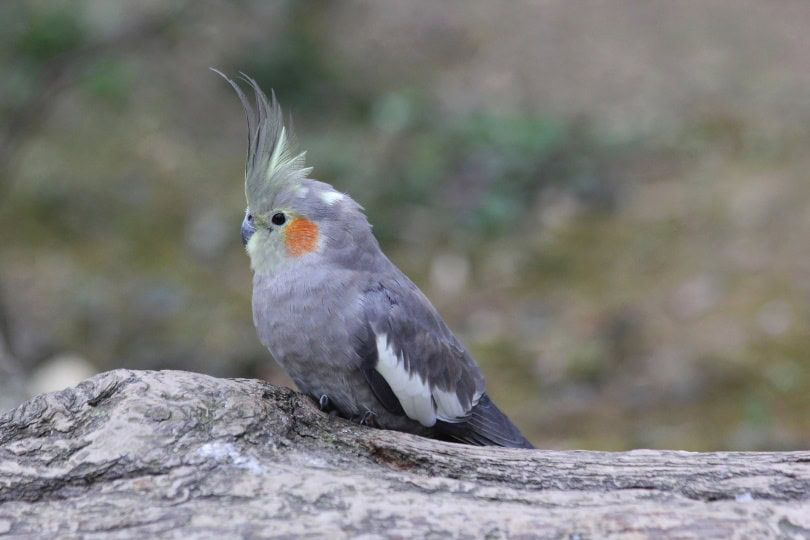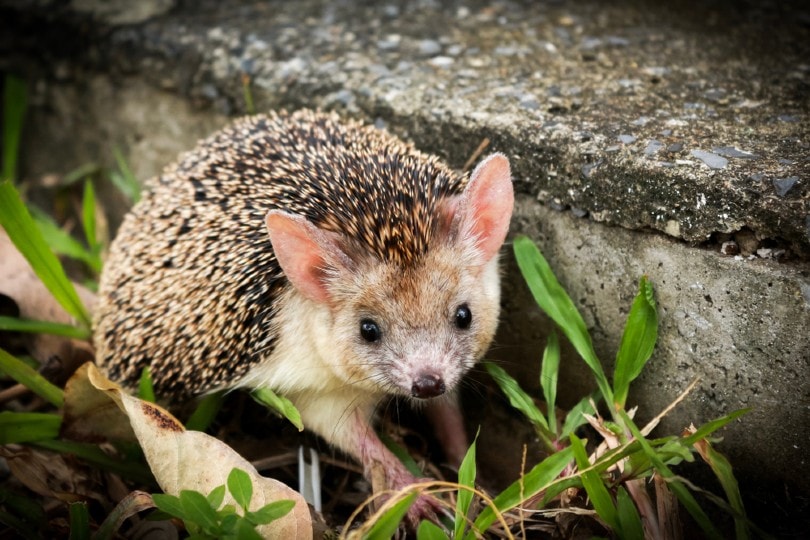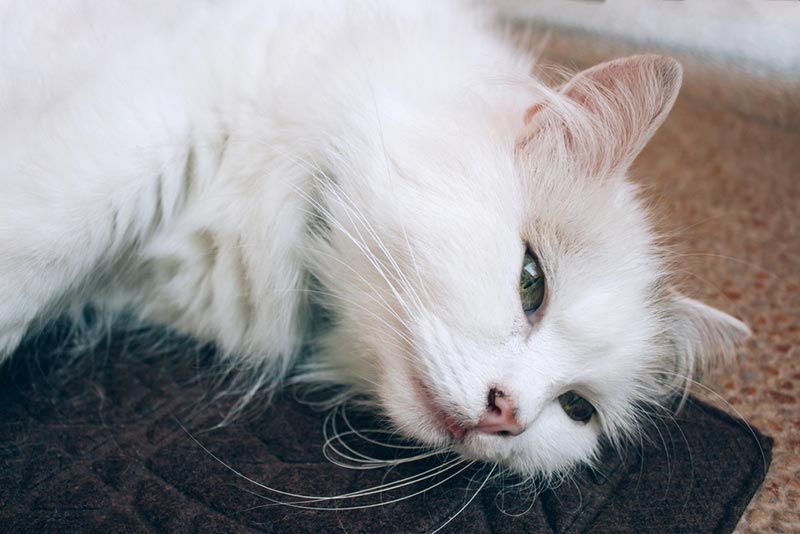VET APPROVED

The information is current and up-to-date in accordance with the latest veterinarian research.
Learn more »The cockatiel is a very popular companion bird for beginners and is highly appreciated for their many qualities. If raising and taking care of juvenile cockatiels is something you want to try, you’ve come to the right place! Check out our step-by-step tutorial on how to take care of these birds to make sure you meet all of their needs.

Before You Start: What You Need to Know
Cockatiels require lots of care and attention; they are also quite vocal and messy little birds. With proper care, they can live for more than 20 years! So, before buying or adopting a baby cockatiel, you need to ask yourself the following questions:
- How much money are you willing to spend? While cockatiels aren’t expensive birds, they do need a large cage, lots of toys, and other items to thrive. You will also need to budget for annual veterinary expenses.
- Are you busy all day? Do you work from home or spend a lot of time outdoors? Be aware that cockatiels, especially juveniles, do not cope well with loneliness. If you can’t spend a lot of time with your bird, consider adopting another species that won’t need your daily presence as much.
- Do you hate noise? Although juvenile cockatiels aren’t extremely loud, they chirp morning and night and make a mess in their cages. If you can’t stand clutter or hate being woken up early in the morning, you should go for a quieter pet.
What Is a Fledgling or Juvenile Cockatiel?
A cockatiel is considered a fledgling when they’ve just left its nest, has its flight feathers, but is still learning how to fly properly. This bird requires large, safe open spaces where they can practice how to fly. Being prone to crash-landings (especially when they’re new to flying), flooring that provides a soft landing pad is highly recommended for fledglings. Also, they are typically transitioning to solid foods at this time, but many still sometimes need assistance with feeding.
A juvenile is a young cockatiel fully capable of flight and feeding themselves. They can be maintained on a diet of solids. They are distinguished from adults by their plumage and the fact that they are not sexually mature.
The 8 Tips for Caring for Fledgling or Juvenile Cockatiels
1. Determine Whether You Want to Buy or Adopt a Juvenile Cockatiel
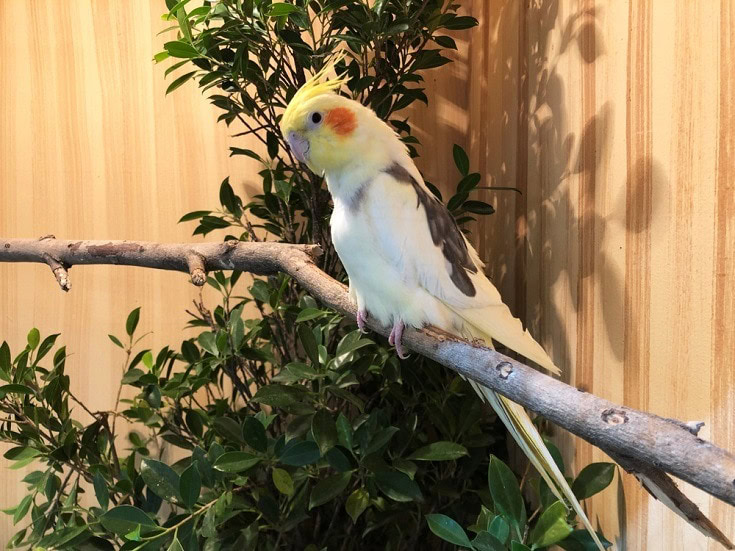
- Buying a hand-fed juvenile from a bird breeder is an excellent option for beginner They should be at least 3 months old. A hand-fed juvenile is already used to human presence, which will make it much easier to care for and tame them. Note that if you are a beginner, you should never try to hand-feed a fledgling or juvenile cockatiel yourself. Always seek advice from your veterinarian before attempting such a delicate procedure.
- Adopt a cockatiel from a shelter. If you’ve been thinking about buying a pet bird, know that it’s usually best to adopt one, even if they are a bit older than you might expect. Furthermore, if you are a beginner, adopting an older cockatiel will help you gain experience before getting a juvenile Either way, be sure to take your juvenile to the vet after adoption to make sure your bird doesn’t have any illnesses.
2. Buy a Large Cage
If you plan to adopt a single juvenile cockatiel, you can put them in a spacious stainless-steel cage that’s at least 25 inches high x 20 inches wide and 15 inches deep. Note that a cage of this size isn’t sufficient for practicing flight.
If your bird does not have a companion of their kind, consider putting the cage where most of your family’s life takes place. It is crucial for these friendly and affectionate little birds to feel close to you.
Equip the cage with several perches, toys (bells and swings), bowls for food and water, and perhaps cuttlefish bones for calcium.
Your juvenile cockatiel’s cage should be deeply cleaned once a week, though you should always make sure it stays clean by changing the bowls and the bottom of the cage every day. Finally, make sure your bird is not exposed to drafts—this is extremely important for their health!
3. Get Your Baby Cockatiel Used to Your Presence
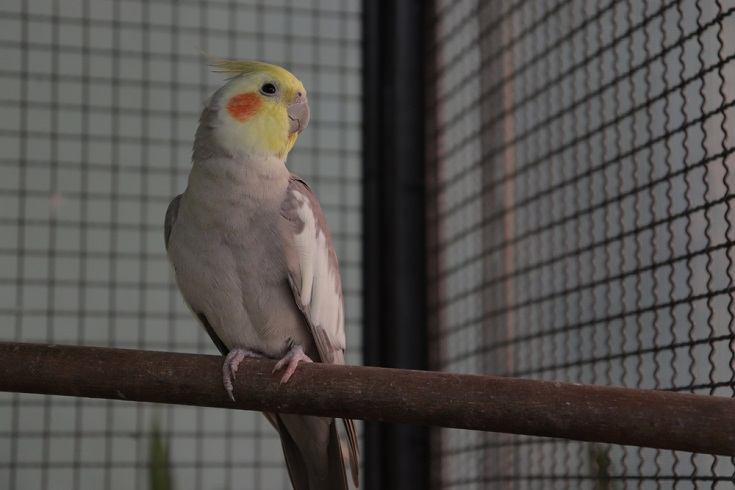
Sit near your juvenile cockatiel’s cage every day to allow them to get used to your voice and presence. Talk, sing, and whistle to them every day. Then, when your juvenile begins to move closer to you every time you sit by their cage, offer them small treats (the most popular is usually millet, followed by corn and sunflower seeds). After doing this little trick for a few weeks, your cockatiel should be used to eating from your hand.
To do this, carefully open the small door of their cage, and show the treat to entice your juvenile cockatiel to approach your hand. Little by little, your bird will get closer to your hand and start to eat from the palm of your hand in no time.
4. Train Your Juvenile Cockatiel to Climb on Your Hand
As soon as your juvenile cockatiel starts to eat from your hand, it’s a sign that they trust you. You can then teach them more tricks, such as climbing on your hand and your shoulder. But again, proceed slowly and with a lot of patience; never try to force your pet to climb on you, or you may lose their trust and get bitten.
5. Be Patient
Give your bird some time to get used to their new surroundings when you bring them home for the first time. If your cockatiel was hand-fed, it might only take a few hours. However, juveniles that haven’t been socialized will need a couple of days to get used to their environment. During their adjustment period, do not handle them, but do the daily cleaning procedures and talk to them softly.
If you’re new to the wonderful world of cockatiels, you’ll need a great resource to help your birds thrive. We highly recommend taking a closer look at The Ultimate Guide to Cockatiels, available on Amazon.
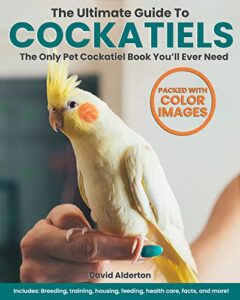
This excellent book covers everything from the history, color mutations, and anatomy of cockatiels to expert housing, feeding, breeding, and health care tips.
6. Discuss Your Cockatiel’s Diet With Your Veterinarian
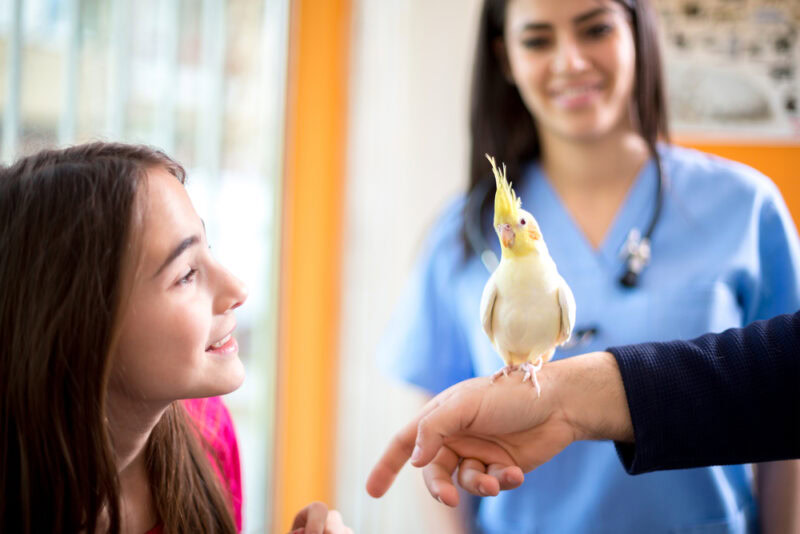
The dietary needs of a juvenile cockatiel are different from those of an adult cockatiel. Chiefly, they will undergo a molt before their adult plumage sets in, and this period of rapid growth and development requires slightly different nutrition to ensure that they’re able to grow and develop properly.
Although dietary guidelines for pet parrots exist all over the internet, these are mostly catered to adult parrots. As such, we strongly recommend talking to your veterinarian about your juvenile cockatiel’s specific nutritional needs.
7. (Try to) Teach Your Juvenile Cockatiel How to Talk and Whistle
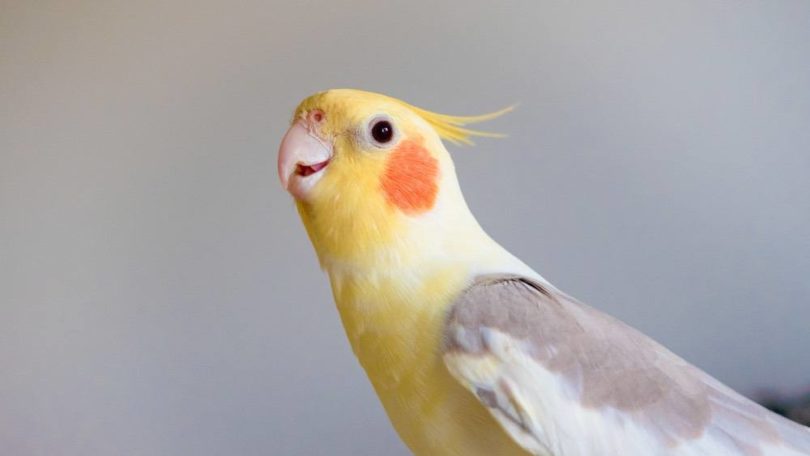
Juvenile cockatiels can learn to talk and whistle as early as 4 months old. However, you must be constant in your “lessons.” Try to speak to them as often as possible, using simple words that are no more than one or two syllables. As soon as your juvenile utters a word or a whistle, offer them a reward right away and praise them!
8. Watch Their Body Language for Signs of Illness
Since cockatiels will often hide their illness until it gets really bad, you should watch carefully for signs of disease. Cockatiels that are very sick will often sit at the bottom of their cage, puffing up their feathers. The other signs that a bird is sick are as follows:
- Puffed-up feathers
- Lethargy, including possibly refusing to fly
- Being quiet (not whistling or singing like they used to)
- Discharges from the eyes, nostrils, or vent
- Tail bobbing as they breathe
- Sudden weight loss
- Puffy eyes or nostrils
- A change in the color of their cere (the area around their nostrils)
- Scaly face, feet, or legs
- Missing feathers (even during a molt, a juvenile shouldn’t appear naked or have bald patches)
- A loss of appetite or refusing to eat
You should immediately contact your veterinarian if your cockatiel exhibits any of the signs listed here. Even though it may not seem economically ideal to take your bird to the vet, they can deteriorate rapidly, and it is not a good idea to “wait and see” if they are already showing signs of illness.
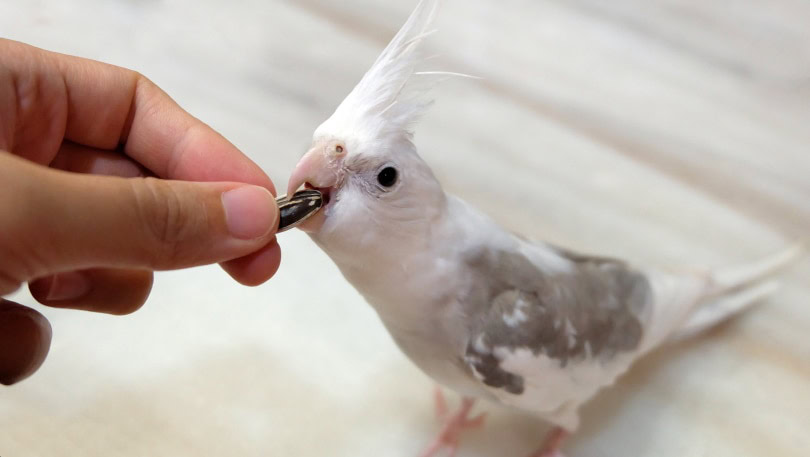

- Always handle your juvenile cockatiel very gently. Remember that these little birds are fragile and can easily get injured.
- If possible, adopt a second cockatiel. Know that the occupation of these birds with variable and stimulating activities avoids behavioral problems! Boredom is a big enemy of cockatiels and can be harmful to their physical and mental health.
- Do not plan to mate your adult cockatiels unless you have experience with other bird species.
- Only stroke or pet them on their face and head. Stroking elsewhere on their body can inadvertently stimulate your bird.
- Cockatiels love to play with mirrors and shiny objects. That said, you may not want to put a mirror in their cage. Since cockatiels think that their reflection is another bird, some individuals may get frustrated when their reflection responds to their antics by mirroring them instead of giving other cues. For example, a male would expect specific cues from a female, which he might not get from his own reflection. He may also be confused as to why another male (his reflection) is giving him signals that he’d expect them to show to a female.

Final Thoughts
Caring for juvenile cockatiels is not that difficult if you are well-prepared and aware of their needs. If you adopt or buy your young cockatiel from a reputable breeder and follow the steps outlined in this guide, you should become a master at raising cockatiel chicks in no time!
Featured Image Credit: Anne Stauf, Pixabay
Contents
- Before You Start: What You Need to Know
- What Is a Fledgling or Juvenile Cockatiel?
- The 8 Tips for Caring for Fledgling or Juvenile Cockatiels
- 1. Determine Whether You Want to Buy or Adopt a Juvenile Cockatiel
- 2. Buy a Large Cage
- 3. Get Your Baby Cockatiel Used to Your Presence
- 4. Train Your Juvenile Cockatiel to Climb on Your Hand
- 5. Be Patient
- 6. Discuss Your Cockatiel’s Diet With Your Veterinarian
- 7. (Try to) Teach Your Juvenile Cockatiel How to Talk and Whistle
- 8. Watch Their Body Language for Signs of Illness
- Final Thoughts
